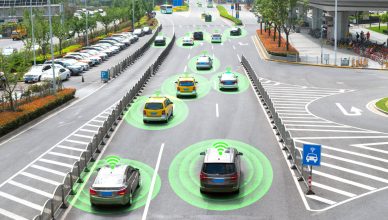On February 14, executives from Toyota, Volvo, GM, and Lyft went to congress to answer questions about self-driving cars.
Rep. Gregg Harper wondered how autonomous vehicles would interact with human drivers. He asked, “[If] I honk my horn [at an autonomous vehicle], will it do any good?”
It’s an interesting question. Most rules of the road are relatively simple for a machine to process. Stay in your lane. Green light means go, red light means stop. Don’t run over people.
But honking a horn is much more complex. It could communicate something serious, like “watch out, I’m about to hit you!” Or it could communicate something completely meaningless, like “cool, a self-driving car!” How would an autonomous vehicle know the difference between an urgent honk and a frivolous honk?
The auto industry executives didn’t really have an answer. “We haven’t reached that point of deciding how and whether it would be appropriate for vehicles to react and in which way to honking a horn,” said Mike Abelson, GM’s vice president of strategy.
Want To See For Yourself How Route4Me Can Boost Your Profits?

They Can’t Take It, But They Can Dish It Out
While we don’t know if self-driving cars will be able to react to you honking at them, we do know that self-driving cars will be able to honk at you.
In May 2016, Google’s monthly report on its self-driving car project revealed that the company is teaching its autonomous vehicles how to honk.
Google self-driving cars use different honks for different situations. If there’s time, they use two short honks to alert other drivers of its presence. In a situation where a quicker response is needed, like when another car suddenly swerves into the self-driving car’s lane, they let out one long, loud honk.
In the future, before you roll down your window and start screaming at a car for honking at you, make sure there’s actually a human in the driver’s seat first.
Want To See For Yourself How Route4Me Can Boost Your Profits?







